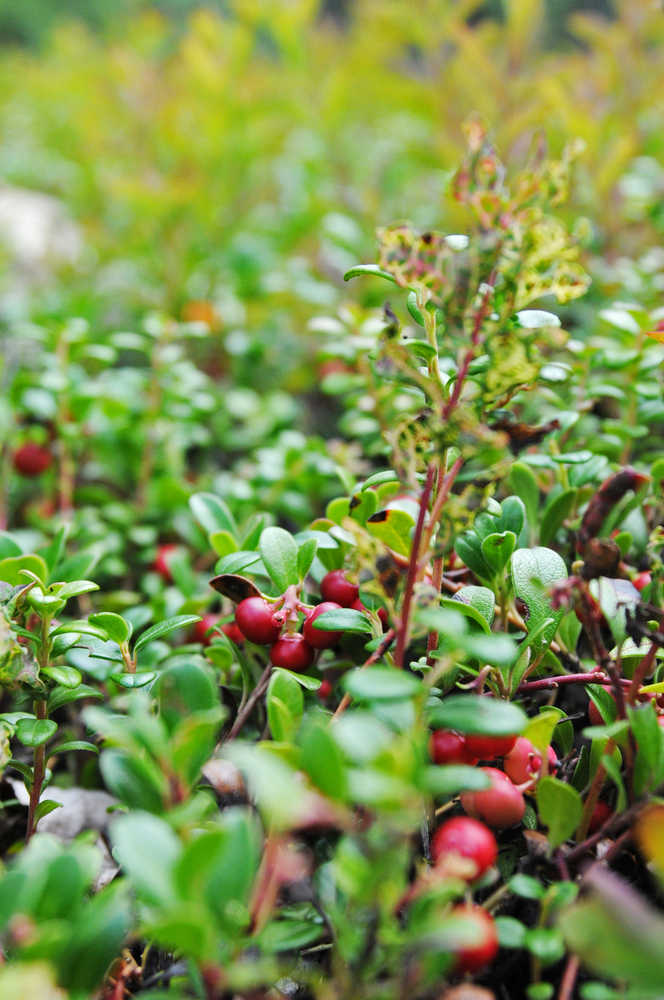Berry pickers foraging on the Kenai Peninsula have noticed lately that things have been a little out of whack.
Currants, the first local species to ripen, were three weeks early this year. People rummaging through boreal forests for their prized, beloved blueberries discovered blooms at their prime nearly one month premature. While these tiny shifts may appear trivial, some are actually reflective of well documented, large-scale increases in climate temperatures.
“Phenology is what you are talking about — seasonal timing, seasonal phenology, the start and stop dates of different berries ripening, when the birds show up,” said Matt Bowser, entomologist at the Kenai National Wildlife Refuge. “It is a hot topic right now, and one of the quickest things expected to change as the climate warms.”
Phenology is caused by non-biological factors — sun light, temperature and precipitation — that tell bears when to wake up, birds to migrate and trees to leaf out.
Refuge visitors have been relaying their observations to staff, Bowser said, and he has been making many of his own. His personal favorite mushroom, the King Bolete, was long gone before he had a chance to harvest this year.
Usually they are found in flushes, large masses of fruiting fungus, in late July or early August, Bowser said. This time they were ripe right at the end of June and all he found were a few shriveled stems decaying in the undergrowth.
Bowser said mushroom blooms have been suppressed the past few years because of a lack of spring rains. The area has had a few dry summers, and many species grow the best when they have plenty of moisture, he said.
Janice Chumley, Integrated Pest Management Technician for the Kenai branch of the University of Alaska Fairbanks Cooperative Extension Service, said she thought the recent warm winters were why berries blossomed early, and why her favorite flower, the iconic fireweed, flourished on a shorter time frame this summer.
“I think that is just typical for this year,” Chumley said. “Hopefully they stick around and linger a little longer next year.”
Chumley said many people who incorporate subsistence practices into their lifestyle plan fishing trips around their favorite berry harvests, and keep close track of when varieties will be ripe.
Alaska, which accounts for roughly 20 percent of the total area of the United States, is warming roughly twice as quickly as the rest of the country, and locals are more likely to notice the small-scale environmental impacts of large-scale warming trends, in bloom, according to the U.S. Environmental Protection Agency. The EPA suggests Alaska’s population will be particularly affected because of a heavier reliance on natural resources.
John Morton, supervisory fish and wildlife biologist at the Kenai National Wildlife Refuge, said he has already noticed some dramatic differences set off by climate change. This spring, Headquarters Lake, situated less than one mile from the Kenai National Wildlife Refuge Visitor Center, was completely thawed at least one month ahead of when is normally expected, he said.
It was a warmer winter so the ice never grew to be as thick as it normally is, and melted earlier and at a faster rate, Morton said. Aside from cross-country skiers and ice skaters having to end their season early, animals that rely on late ice to find and track food sources, even ice already in the process of breaking up, will have to expend more energy making longer trips around large bodies of water, he said.
While no continuous efforts have been established through the refuge, Morton said tracking phenological events is something he has been throwing around for more than a decade. The challenge, he said, is deciding what is best to monitor.
There are only a handful of organizations monitoring these shifts in natural cycles, but there are more than a few foragers taking notice.
The Local Environmental Observer Network, or LEO, is one of the groups tracking these changes in a major way in Alaska. The program relies on observations from anyone, including members of the public, who can take the time to enter something into the public database they have found to be out of place in their environment.
Morton said while entries may seem to be somewhat random, by regularly recording unusual events, patterns will start to emerge. At the least it shows how the phonological phenomena are starting to occur everywhere, he said.
Reach Kelly Sullivan at kelly.sullivan@peninsulaclarion.com.

